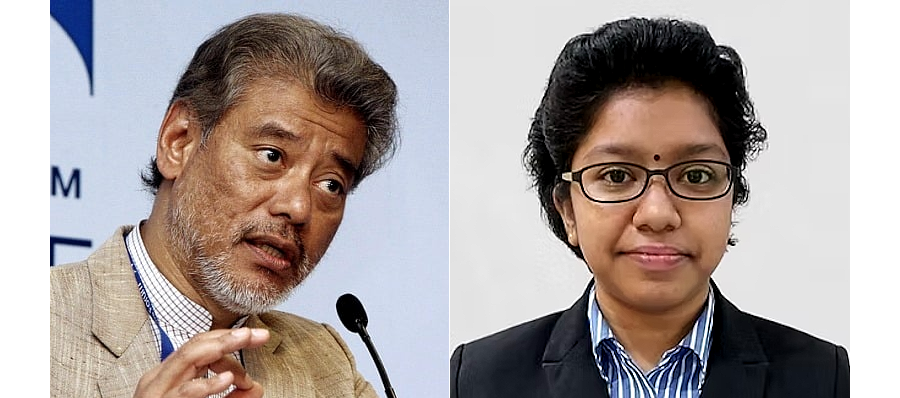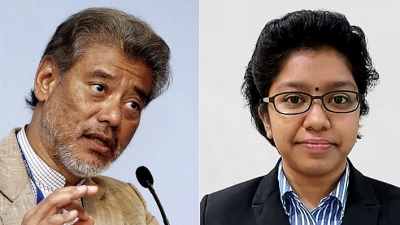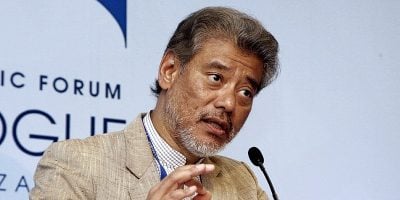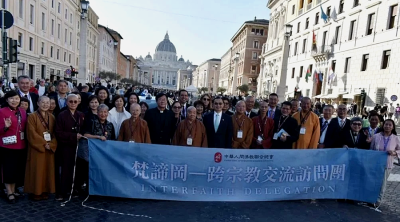
Opposition to data centers (DCs) has been rising quickly worldwide with growing artificial intelligence (AI) use and related resource impacts.
While largely ignoring public concerns, DC growth serves US President Donald Trump’s favored “tech bros.”
Who are data centers for?
Growing consumer interest is accelerating demand for and expansion of DCs needed for AI-based applications to work. AI has already overwhelmed other “cloud” uses.
The AI boom has driven the rapid growth of DCs, leading to the bipartisan US public backlash due to higher energy, water and land use and prices.
The RM141.72 billion DC investments in 2024 have boosted demand for land zoned for industry in Johor and the Klang Valley, where prices in prized locations shot up by a fifth.
In October 2024, McKinsey projected global energy demand by DCs would rise by 19 percent to 22 percent annually until 2030, reaching annual demand between 171 and 219 g. This greatly exceeds the “current demand of 60 gw.”
“To avoid a [supply] deficit, at least twice the [DC] capacity built since 2000 would have to be built in less than a quarter of the time,” McKinsey said.
As tech companies are not paying for the additional energy generation capacity, consumers and host governments are, whether they benefit from AI or not.
As DCs increasingly faced growing bipartisan pushback in the US, developers have turned to developing countries, thus “outsourcing” problems to poorer nations with even more limited resources.
Understanding these energy-hungry and water-thirsty facilities is necessary to better protect economies, societies, communities and their environments.
Energy gluttons
With growing corporate and consumer demand for AI, DC growth will continue and even occasionally accelerate.
More AI usage will significantly increase energy and water use, accelerating planetary heating, both directly and indirectly, due to increased greenhouse gas (GHG) accumulation.
As growing AI usage increases demand for DCs worldwide, supporting computers will need much more electricity, generate more heat and require more water and energy for cooling.
A high proportion of energy used by DCs, from 38 percent to 50 percent, is for cooling.
Electricity generation, whether by burning fossil fuels or from nuclear fission, needs more cooling than can be provided by renewable energy from photovoltaic solar panels or wind turbines.
In 2024, some 81 percent of Malaysia’s electricity came from fossil fuels, much of it coal-fired.
A small-scale DC with 500 to 2,000 servers consumes anywhere between 1mw and 5mw of power.
A “hyperscale” DC, typically for tech giants, which hosts tens of thousands of servers, consumes from 20 mw to over 100 mw, like a small city.
Not cool at all
DCs require much fresh water to cool their servers and routers. In 2023, Google alone used almost 23 billion liters to cool its DCs.
Computer processors and servers in DCs generate much heat, requiring much water and energy to cool them down.
In cooling systems involving evaporation, cold water is needed to absorb severe heat, releasing steam into the atmosphere. Closed-loop cooling systems absorb heat using piped-in water.
Air-cooled chillers cool down hot water. Cooled water recirculated for cooling requires less water but more energy to chill hot water.
As most AI observers focus on the enormous energy requirements of DCs, their massive water needs to cool equipment tend to be ignored and understated.
Worse, heat is more environmentally threatening in the tropics, where ambient temperatures are generally much higher than in the temperate zone.
Unsurprisingly, DC investors rarely warn host governments about the amount of locally supplied energy and water required.
Locating new DCs in developing countries will thus increase their GHG emissions and further heat local microclimates and the planetary atmosphere.
Establishing more DCs will inevitably crowd out other possible uses of freshwater supplies and reduce local groundwater aquifers.
Selangor, Johor and Negeri Sembilan, the three southwestern Malaysian states now hosting most DCs, need over 800 million liters daily but the existing infrastructure can only provide 142 MLD.
Johor has around 50 DCs, with some occupying over 100 acres. The state bordering Singapore is expected to have 60 percent of Malaysia’s DC capacity by 2030.
But only 17 data centers in Johor have had their water supply needs approved by regulators due to the inadequacy of water supplies from its major watersheds.
Despite government reservations about its location and connectivity issues, Tasik Kenyir has been touted as an ideal DC hub due to land and fresh water availability and the potential for floating solar plants to generate renewable energy.
Foreign investors expect subsidies
Like other prospective investors, DCs have located, or relocated, where host governments have been more generous and less demanding.
Prospective host governments compete to offer tax and other incentives such as subsidized energy and water to attract foreign direct investment in DCs.
Singapore’s moratorium on new DC projects from 2019 turned investor attention to Malaysia, where successive governments have willingly obliged with more incentives.
Many foreign investors have profited from subsidized energy, cheap land and water and other special incentives.
Malaysia’s Digital Ecosystem Acceleration (Desac) incentive scheme offers investment tax allowances of up to 100 percent on qualifying capital expenditure for eligible digital infrastructure providers, “offsetable” against statutory income for up to 10 years.
Its National Cloud Computing Policy (NCCP) broadly promotes cloud computing, including ostensibly “green DCs” while the Malaysia Digital Economy Blueprint (MyDIGITAL) facilitates “digital investment,” including DCs.
Budget 2026 recently allocated RM2 billion for the Madani Undersea Cable Connection (Salam), across Johor, Sabah and Sarawak, to provide high-speed and high-bandwidth infrastructure to facilitate data transfer by DCs.
Between 2019 and 2023, Chinese firms like Huawei and Tencent invested almost US$10 billion in DCs in Malaysia. In 2024, Amazon, Alphabet and Google announced investments of around US$23.3 billion.
Washington has been pressuring Malaysia to stop Chinese firms from using the country as an “export-control backdoor” for US AI chips.
Washington alleges that such DCs outside China buy chips to train its AI for military purposes.
In July, the government announced permits would be required for all exports and transshipments of advanced US chips, such as Nvidia’s, to comply with Malaysia’s 2010 Strategic Trade Act.
This limits Chinese firms’ access to such chips. Washington claims Chinese substitutes for US-made chips are inferior and wants to protect US technology from China.
Hi-tech jobs?
The Asia-Pacific Digital Center Association (APDCA) claims the industry will create 30,900 new jobs annually in Malaysia by 2030, with 4,300 high-value positions in cloud computing and AI.
Advocates claim DCs will provide hi-tech jobs. But in Malaysia, most DC jobs are likely to be in maintenance and operations rather than “high-skilled.”
Construction and installation work will be temporary while most managers will be from headquarters.
While the DC discourse focuses mainly on foreign investments, there is little discussion on the growing national need for DCs, including Malaysia’s desire for data sovereignty.
If Malaysia wants to develop end-to-end DC capabilities, and not just host them, accepting so many foreign requests will inevitably block Malaysian capacity ambitions. Strains on national energy, water and land resources are also growing.
Despite Malaysia’s failed but toxic experience with recycling imported plastic waste, there is limited interest in the “afterlife” of DCs, such as what happens after they have outlived their purpose or the disposal of waste materials.
Higher energy and water costs, subsidies, tax incentives and other problems caused by DCs are hardly offset by their modest employment and other benefits.
This article first appeared in Forum, The Edge Malaysia Weekly on October 27, 2025 – November 2, 2025.

(Jomo Kwame Sundaram is currently senior adviser at Khazanah Research Institute (KRI). A former economics professor, he was United Nations assistant secretary-general for economic development. He is a recipient of the Wassily Leontief Prize for Advancing the Frontiers of Economic Thought. K Kuhaneetha Bai studied at the University of Malaya and does policy research at Khazanah Research Institute.)
ADVERTISEMENT
ADVERTISEMENT





































